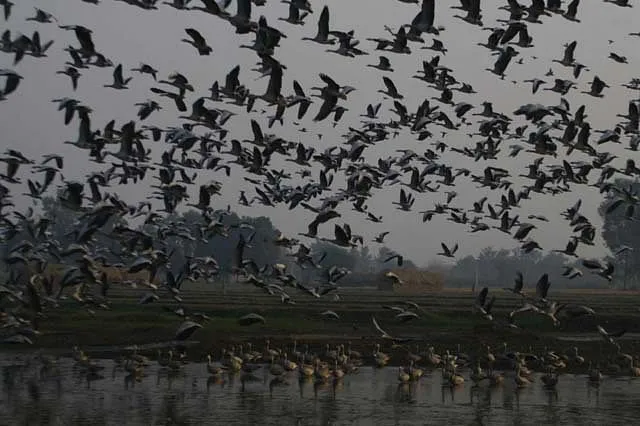Srinagar: In the last 10 years, J&K lost 2372 kanal of wetlands, according to the most recent Government of India (GoI) report. The report paints a bleak picture of J&K wetlands.
Environmental activists and admirers of nature are concerned about the declining trend as J&K is losing its “green gold” at an alarming rate.
Over 120 hectares (2373 kanal) of wetland were lost in J&K between 2006-07 and 2017-18, according to a report by the Ministry of Statistics and Programme Implementation (MOSPI), a department of the GoI concerned with the coverage and quality of statistics.
As a result, the total number of wetlands decreased from 404 in 2006-07 to 403 in 2017-18, a decrease of one wetland.
This brought the total amount of wetlands down from 1,64,230 hectares in 2006-07 to 1,64,110 hectares in 2017-18.
The main factors lowering the area are excessive habitat destruction, pollution, and heavy human interference.
“Wetlands offer habitat and a haven for biodiversity as well as assist in the development of a species’ resilience to safeguard it from population decrease. Due to habitat loss, pollution, excessive use of aquatic resources, tourism, and the introduction of invasive exotic species along with foreign diseases and parasites, wetland biodiversity is being lost. The usefulness of wetland ecosystems in assisting to slow and reverse biodiversity decrease must be acknowledged more widely,” the report stated.
The number of wetlands that have been added to Ramsar sites and require conservation for their resuscitation was also included in the study.
The 350-hectare Surinsar-Mansar Lakes, Wular Lake (18,900 hectares), Hygam Wetland Conservation Reserve (802 hectares), Shallbugh Wetland Conservation Reserve (1675 hectares), and Hokersar Wetland (1375 hectares) are also included.
In addition to the general decline in wetlands, the research claimed that the Very Dense Forest (VDF) cover has shrunk from 4203 sq km in 2017-18 to 4155 sq km in 2019-20.
However, the statistics showed a rise in the total area of Moderately Dense Forest (MDF) and Open Forest (OF), going from 7952 sq km in 2017-18 to 8117 sq km in 2019-20, and from 8967 sq km to 9115 sq km from 2017-18 to 2019-20. These details may be found in MOSPI’s report, ‘Envistats India 2022’.
With a proposed budgeted commitment of Rs 46.70 crore, the J&K government has developed an Integrated Management Action Plan to conserve wetlands in Kashmir.
According to a draft of the Action Plan, a total budget of Rs 46.70 crore is suggested for the five-year (2022-27) period that the Wetland Conservation Reserves of Kashmir Region are to be subject to the Integrated Management Action Plan.
“Rs 18.93 crore has been allocated for the overall investment followed by Rs 13.15 crore for Biodiversity Conservation and Rs 7.49 crore have been apportioned for Education Awareness and Eco-Tourism, besides Rs 80 lakh crore for the Sustainable Resource Development and Livelihood Development and Rs 6.33 crore for Institutional Development,” it reads.
“The management planning framework will seek a balance between ecosystem conservation for ensuring the ecological integrity of all our wetlands and ensuring livelihood security to the communities. It will also seek to ensure an effective institutional mechanism that harmonises planning at various levels with the participation of all concerned stakeholders to achieve the objectives of integrated conservation and livelihoods.”







